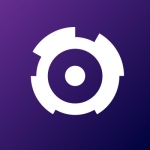Currently we use it for monitoring various systems, performance settings. It does very well for that, so I can say we're really happy with it.
It's close to real-time, so it's very accurate.
There are some features that are specialized towards our industry, but more along the lines of: Say you have a group of systems in a homogeneous environment and you'd like to find out if any are differing in their configurations, versus the rest of the group, I think it would be helpful if the AI would help bring that forward. You can already define a group of servers or machines, so if the AI would pick up on this group of machines, that they should have a standard configuration and say, "Some of these machines don't have that standard configuration." It would raise a problem or an alert. I think that would actually be very helpful.
So far, the solution seems very stable. I haven't really seen any crashes or downfalls and I haven't seen it cause instability towards anything else.
We haven't seen any adverse effects due to scalability.
I haven't had to use technical support, personally; I can't speak for anyone else at the organization.
I wasn't involved in the initial setup, so I can't speak to whether it was complex or not. I did go through some initial training on OneAgent, and it looks extremely straightforward. I can't imagine it being too complicated.
When it comes to the nature of digital complexity, I think the role of AI for IT's ability to scale in the cloud, and managing performance, is very important because as large platforms grow, it's going to be extremely important to be able to pinpoint those problems and help find root cause analysis, that much faster. You're going to have that many more logs, and data, and code to flow through. A small subset of people just isn't going to be able to do it effectively.
We have used a small, limited set of siloed monitoring tools. In previous jobs, they were homegrown, so they were only as effective as we could make them be, which was only as effective as we had time to make them be. There was a balance because we had to fix what was going wrong and also try to build the tools to find what was going wrong. It was a tough balance to find. Switching jobs, we've used tools like Splunk alongside Dynatrace, alongside a couple other tools. They're all different tools used for different tasks, so I'm not sure if you can quite compare them side to side. It seems like the new Dynatrace has quite a few new features we're quite interested in.
If we had just one solution that could provide real answers, as opposed to top level data, that would be extremely helpful. That way, everything is concise, to the point, and in one location. Team members wouldn't have to go through different pages, different locations, and memorize where they would have to go and find what data they were looking for. They could find it all in the one place, very quickly and very easily.
The benefit would be that if you had everything in one place, you could save time looking for answers. Time is money, and when you are running into an issue, in an industry like ours, where seconds are basically hours compared to what most other companies have, it's an extremely important thing to have information at your fingertips, in a good location too. Having all that in one location and having the data immediately right there is what every company is really looking for.
I would give it a nine out of 10. I haven't seen everything out there, but it's up there.
If a friend was looking to adopt an APM solution, I'd probably steer them towards Dynatrace, just from personal experience. It's one of the only ones that I've had experience with, it's been generally very good. And seeing the direction they're going, it's a very good direction. It's where it needs to go.

















